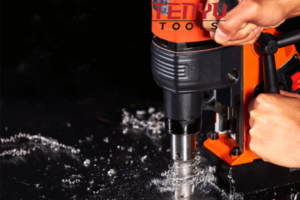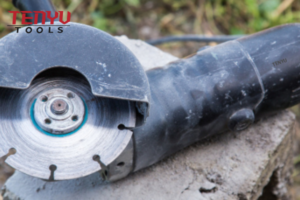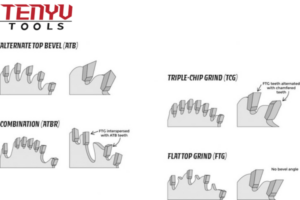Circular saw blades are essential for many industries. Woodworkers need them for cutting timber. Metal fabricators need them for slicing through metal sheets. Home improvement enthusiasts also use them for various tasks. People often look for trusted manufacturers who can provide these blades in smaller quantities. Some projects do not require large orders. Some buyers do not want to invest in big inventories. Low Minimum Order Quantities (MOQs) can be helpful. When you find a partner who supports smaller MOQs, you can save money and space. You can test new designs or materials without making big commitments.
People sometimes struggle with finding these manufacturers. Factories often demand large MOQs to justify production runs. They also want to streamline their logistics. Some factories worry about waste, so they do not like small orders. But small businesses or startups need more flexibility. They might want 100 pieces instead of 1000. They need strong partnerships that let them scale. They also need consistent quality in small or medium runs. This process can seem difficult, but it does not have to be impossible.
You can search for trustworthy suppliers through online marketplaces, trade shows, or references. You can request smaller batches if you know how to negotiate. You can also build good relationships by learning about manufacturers’ concerns. Factories want to work with stable clients, so they look for people who respect their processes and costs. You can address their worries by researching materials, clarifying lead times, and planning shipping logistics. That will help you reach a more flexible agreement on MOQs.

Below are key ways to approach this problem. You will see tips on negotiation, sample requests, and more. You will also see places to search for low MOQ manufacturers. Then you will learn how to handle customization if you want unique blade designs. Each section will contain extra insights in a “Dive Deeper” part. You can compare your options, weigh benefits, and move closer to a successful business relationship.
How Can I Negotiate Lower MOQs with Manufacturers?
Some factories have set policies for their minimum orders. But you can often speak with sales representatives about your needs. Many manufacturers agree to reduce their MOQ if you show a long-term plan. You should present data on your potential growth. You can estimate your future monthly or yearly demand. This can show the factory that you will be a reliable client. You can also try to combine orders with others in your network. That might help you place bigger requests that benefit both sides.
It helps if you understand costs. Factories must spend money on raw materials, labor, and equipment setup. If you show that you know these expenses, you can find ways to cut them. Sometimes you can pay for special tooling or help with shipping. That might encourage the factory to accept a smaller MOQ. You can also focus on simple packaging to lower costs.
Dive Deeper
Manufacturers care about stability. They do not want to start production lines for a few items, then halt the workflow. You can address these concerns if you explain why your business will keep placing orders. You can show early demand for your new blades by collecting feedback from potential buyers or showing presales data. You can tell them that your immediate volume might be small, but you expect consistent reorders1. This can help them see value in a smaller run. Many factories also want to maintain stable relationships with clients, because they invest time in setting up production specifics. If you prove that you are serious, you can unlock better MOQ deals.
You can also consider seasonal changes. If a factory experiences slow months, they might be more open to smaller runs. You can ask about their production calendar. You can ask if they have partial capacity that you can fill. This can give them extra work during quieter periods. This can also lead to better negotiation outcomes. You can then talk about flexible payment terms, like deposits and balance payments. Some manufacturers will reduce MOQs if you offer a higher deposit. This helps them cover any immediate costs. You can also propose an incremental order approach. This means you start with a trial batch. Then you scale up if the product meets your requirements. This approach can reduce risk on both sides.
You can keep negotiations simple. You can use a short contract that details the agreed MOQ, the pricing structure, and any responsibilities for shipping. You can list each party’s obligations. That will help build trust. You can also promise to provide feedback that might help the manufacturer improve. You can share quality observations after the trial run. You can discuss ways to refine the blade’s design or reduce waste. This can create a more collaborative process.
Sample Table: Possible Negotiation Points
| Item | Explanation | Benefit to Manufacturer |
|---|---|---|
| Larger Deposit | Pay more upfront to show commitment | Reduces financial risk for factory |
| Simpler Packaging | Use basic boxes or labels | Lowers production and material costs |
| Flexible Delivery Dates | Let them schedule production in slower months | Helps them utilize unused production capacity |
| Regular Reorders | Plan frequent small orders instead of occasional big ones | Adds predictable revenue stream |
What Should I Consider When Requesting Samples?
Samples are important for testing the blade’s performance. You need to confirm that the blade material meets your standards. You also want to confirm the teeth are of the correct shape and sharpness. Some manufacturers charge for samples. Others might provide them free if they see you as a promising client. You should ask about sample lead times. A reputable factory will give you a clear timeline. They will outline the quality control steps they follow. You can arrange for a small run to see how the manufacturer handles your request.
You can also ask about shipping fees for samples. You might pay a higher unit cost because of small quantity. But this is normal. You should see it as an investment. It is wise to test the blade in actual work conditions. You can cut through different materials to see how it performs. If you notice any flaws, you can discuss them with the factory. Good communication can help refine future batches.
Dive Deeper
Sample requests can affect your relationship with the manufacturer. You should plan a clear testing procedure. For instance, you can decide on specific materials you will cut, such as pine wood2, medium-density fiberboard, or aluminum sheets. You can then measure cut quality, blade durability, and potential signs of overheating. You should document each test. You can note whether the blade remains sharp after multiple uses. If you find consistent issues, you can return that data to the manufacturer. You can ask them to adjust the blade’s tooth design or use better steel. This can help you achieve the final product you want.
Manufacturers sometimes have in-house testing. But you should not rely only on their reports. Your own use cases might differ. You might have particular thicknesses or cutting speeds. You might also need specific hole sizes or arbor types to fit your machinery. You should confirm these details before requesting samples. You should create a clear specification sheet with the following:
- Blade diameter
- Number of teeth
- Material grade (e.g., tungsten carbide tips or high-speed steel)
- Arbor hole size
- Recommended RPM range
This specification sheet can guide the manufacturer’s production team. It can save time. If the manufacturer sees you are well prepared, they might prioritize your small sample run. They might also see potential for a smooth partnership. This can help you when you want to negotiate MOQs later.
You should also plan a timeline for evaluating the samples. Some people keep the samples for weeks to see if they hold up under heavy daily use. Others do quick tests and finalize the order. You should do what fits your business model. But it is best to do thorough checks if you plan to sell these blades. Your customers will expect consistent results.
If you are happy with the samples, you can move forward. If you are not, you can ask for a second round. Some factories might charge additional fees, so try to address all concerns in the first sample review. This can save time and money. It can also show the manufacturer that you are serious and meticulous.
What Are the Best Online Platforms to Connect with Low MOQ Manufacturers?
Many business owners use online directories to find suitable factories. Alibaba is a leading platform. It has many categories, including hardware and tools. Global Sources is another option. It offers product pages with supplier certifications. Some companies use Thomasnet if they want to source from North American suppliers. Others turn to industry-specific forums or B2B networks. These sites list contact details and factory profiles. You can filter by MOQ ranges. You can also check user reviews or see badges that show verified suppliers.
Some platforms let you post your RFQ (Request For Quotation). You can mention your desired MOQ. Interested factories can respond if they can meet that requirement. You can compare different offers. You can look at lead times, sample costs, and shipping methods. A direct approach can also work. You can try to email factories you find through a search engine. You can then ask about their standard MOQ policies. Some might be flexible if they see potential in your business.
Dive Deeper
Online platforms can save time. People often appreciate the convenience of searching from anywhere in the world. But you need a strategy to stand out. Manufacturers receive many inquiries. Some are from serious buyers, some are not. You can craft a clear introduction. You can include your company name, the nature of your business, and your planned order quantities. You can also note your target market3. That helps the factory see if there is a good fit. For instance, if you specialize in woodworking tools, you can mention the types of clients or retail channels you plan to serve. This detail can help the supplier guess your longevity as a partner.
You can also use search filters to narrow down your list. You can look for manufacturers who explicitly mention “Low MOQ” or “Small Volume Orders Accepted.” You can check how many years the supplier has been active on the platform. You can look for reviews or trade assurance indicators if available. Some sites give you real-time chat options. You can message suppliers directly and gauge their responsiveness. Quick communication often signals a more organized operation.
Many of these platforms offer advanced features. Some let you see product catalogs or virtual factory tours. If the platform allows, you can compare certifications. For example, ISO 9001 for quality management or an SGS audit report. You can also view references from past customers. This can help you verify reliability. You should check shipping options, too. Some suppliers list shipping partners they work with. Others can handle air freight or sea freight. You can check typical lead times. You can also see if they have rush services for urgent orders. This data can help you plan your inventory.
Below is a simple table comparing some common B2B platforms:
| Platform | Focus Area | Known For | Typical User Base |
|---|---|---|---|
| Alibaba | Worldwide, many sectors | Trade Assurance Program | Global importers |
| Global Sources | Asia-focused manufacturing | Verified suppliers | Mid to large buyers |
| Thomasnet | Mainly North America | Industrial categories | Local or regional buyers |
| Made-in-China | Chinese suppliers | Range of product listings | Global audience |
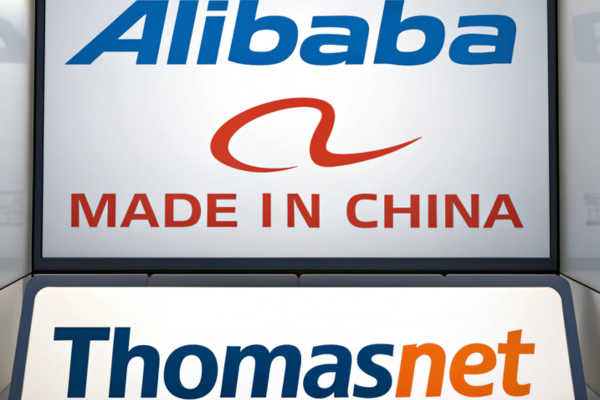
You can also combine your platform searches with old-fashioned networking. Some people attend hardware or industrial tool trade fairs. They meet representatives and form contacts. Then they follow up online to request quotes or share product details. This blend of methods can yield better results.
How to do Customization with Manufacturers?
Customization is often necessary. People might need special blade diameters, unusual tooth configurations, or coatings that reduce friction. Factories can do these tweaks, but they often prefer bigger volumes. Custom requests add extra complexity. This means they need to change tooling or source special materials. You can still achieve customization with a low MOQ if you approach it carefully. You should present exact specifications. You should also be open to the factory’s suggestions. They might have experience with certain metals or designs. This can help optimize performance and reduce cost.
You should create clear product drawings or references. You should specify all measurements, angles, or coatings. You can also provide examples if you have them. Some people send old samples from other suppliers so the factory can replicate or improve. You can also create 3D models if you need complex designs. Good communication is key. Many misunderstandings happen because details are not discussed. That can lead to wasted time and money.
Dive Deeper
Customization often starts with a discussion about function. You should explain the material you plan to cut. Different materials need different tooth angles and spacing. If you are cutting steel, you might need a blade with carbide teeth. If you are cutting wood, you might use a blade with a higher tooth count for fine finishes. If you need a general-purpose blade, you might want something with medium spacing. The factory can help you balance cost and performance. When you have unique needs, you should also think about coatings. Some coatings4 can prolong blade life or reduce heat buildup. But these coatings can require specialized equipment or partnerships with coating providers. That might affect MOQ, because your order has to justify the added complexity.
You should also think about brand identity. Some businesses want their logo printed on the blade. Others want color-coded tips for marketing reasons. You can check if the factory has a printing service or if they outsource that. You should clarify the format of your brand image, such as a high-resolution file or a vector graphic. If you provide them with precise instructions, they can do the job more easily. This step can also result in lower mistakes. Sometimes small details, like color matching, can create misunderstandings. You can do a test print on a non-functioning sample piece to see if it looks right. Then you can confirm the rest of the production.
Here is a table that shows some customization options:
| Customization Aspect | Examples | Possible MOQ Impact |
|---|---|---|
| Blade Coating | Titanium, Chrome, Teflon | Might require special equipment |
| Tooth Design | Alternate Top Bevel, Triple Chip Grind | May need retooling |
| Label/Brand Printing | Logos, Color-coded info | Usually low impact unless complex |
| Special Materials | Tungsten carbide, Diamond tips | Often requires higher volume buys |
When you finalize your customization, you should confirm that the factory can produce consistent quality. You can request a pilot production run. This can be smaller than their normal run but still bigger than a single sample piece. You can then review the final product performance before you commit to a full order. You should also confirm packaging. If you want a branded box or a specific label, you can supply the design. Some factories will handle printing, but you might find it more cost-effective to source packaging from another supplier.
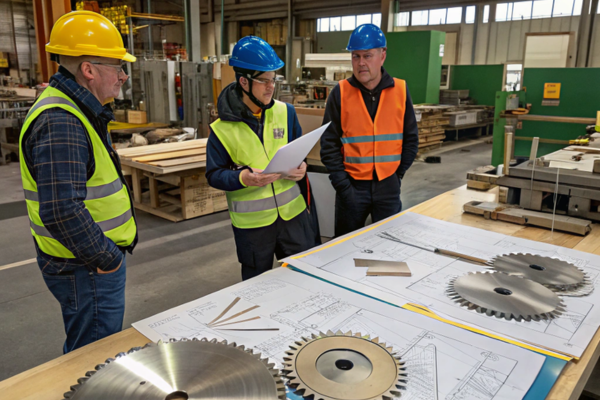
Good customization requires strong teamwork. You and the factory must share the same vision. You should hold short meetings or calls if anything seems unclear. People often use simple design documents, bullet points, and reference images to ensure clarity. You should also keep track of version numbers if you modify designs along the way. This prevents confusion about which file is final. If all these steps go well, you can end up with a unique blade that has a small minimum order requirement. That can help you enter niche markets or stand out from competitors.
Conclusion
Low MOQ manufacturing can unlock new possibilities for your circular saw blade business. You can test new markets and styles without committing to large inventories. You can start by learning how to negotiate. You can also make sure you have clear sample procedures. You can search on the right platforms for the best suppliers. Then you can work on customization if you want a special design. All these steps can help you find a reliable partner who supports smaller order sizes. You can then grow at your own pace while maintaining quality and brand identity.
-
Reorders are a vital part of maintaining steady business. ↩
-
"pine wood" relates directly to one of the materials mentioned. ↩
-
"target market" offers additional context for businesses looking to understand how market segmentation works. ↩
-
Coatings play a critical role in cutting tool performance and lifespan. ↩

